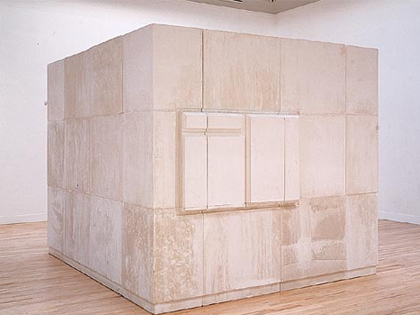Andrew Graham-Dixon on Rachel Whiteread's bedsit, Joseph Beuys's old room and the Courtauld's new home
Rachel Whiteread's Ghost is a pale apparition, a whited sepulchre that doubles as a monument to cramped living conditions in N6. Ghost eludes precise definition: a paradox given physical form, a solid enigma. Much work has gone into it. Whiteread has taken a series of exact plaster casts of a bedsitting room in an abandoned house on the Archway Road and reassembled them in the Chisenhale Gallery. The result is, as her title implies, the ghost of a domestic interior, its double in bleached plaster. It is also, as it were, an anti-room, since what it replicates, as a cast, is not the original room itself but the space which it contains.
Ghost is a tantalus of sorts: a room that you cannot enter, a chunk of solidified air shaped by the spectral imprint of wall and moulding, window and doorframe, that you can only inspect from the outside. The plaster has picked up traces of former occupancy - the fireplace, reversed like everything else, is a grate-moulded bulge discoloured by sooty residue. Ghost is melancholy in the way that photographs, themselves ghostly relics of the past, often are: remembrance made tangible, a curious, inaccessible memento. Whiteread, who graduated from the Slade School of Art in 1987, has already shown herself to be a young sculptor of some promise. She continues to make a good impression.
Whiteread treads a thin line between sculpture and architectural intervention, working in what has become virtually a new medium in the second half of the twentieth century: Gordon Matta-Clark has sawn buildings in half; Christo has wrapped them; in this country, Richard Wilson has produced some of the most arresting work of the last decade with his own subtle...


